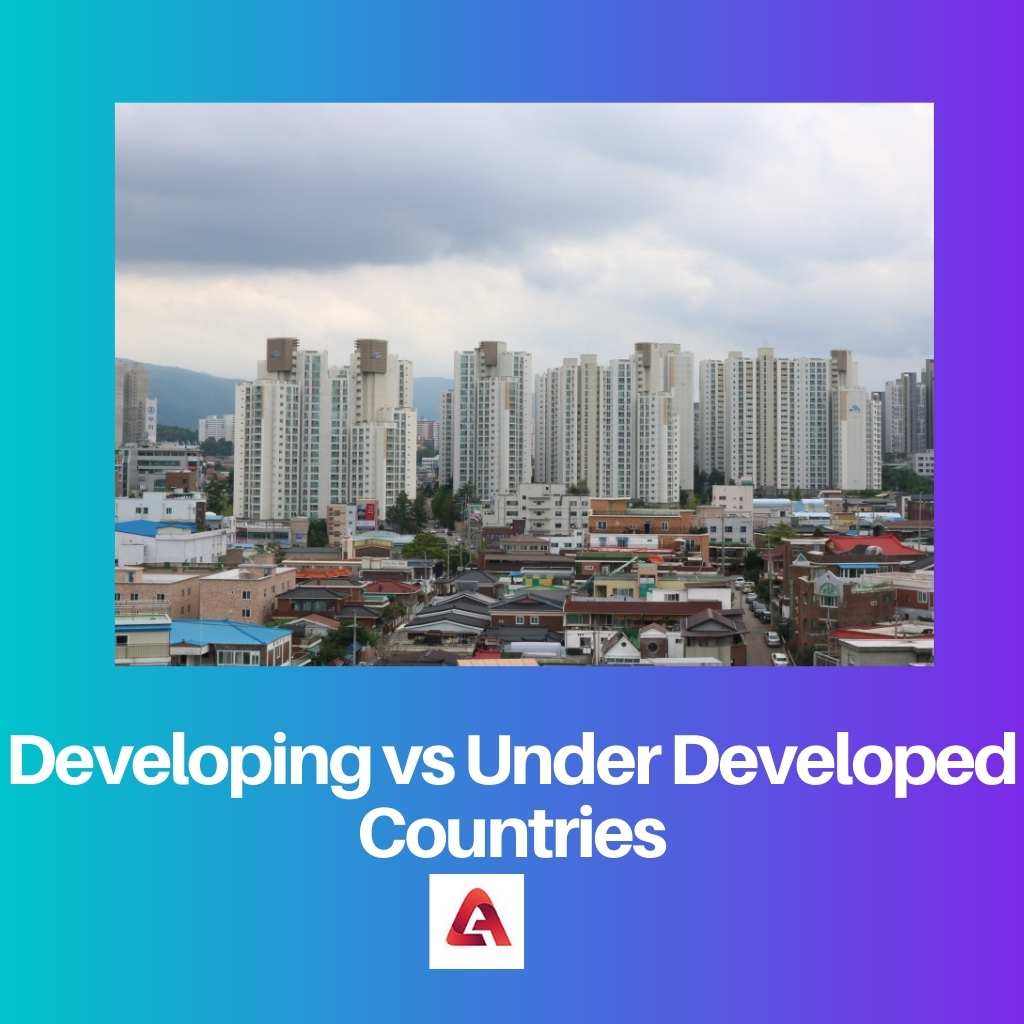According to the criteria of the United Nations, countries across the globe are categorized broadly into three categories. These three categories are developed, developing, and underdeveloped countries.
The United Nations ranks the countries according to Human Development Index and socioeconomic development standards. Hence, distribute the governments into these three categories.
Key Takeaways
- Developing countries are nations experiencing economic, social, and political progress. In contrast, underdeveloped countries face severe challenges in poverty, infrastructure, and social indicators, needing more resources or capacity to achieve substantial growth.
- Developing countries are on a path towards improved living conditions, increased literacy rates, and stronger economies, whereas underdeveloped countries need help to make significant progress.
- Both categories highlight the disparities between nations in terms of development and well-being, but they represent different stages of progress and challenges faced by countries on the global stage.
Developing vs Under Developed Countries
Developing countries are nations with lower living standards, underutilized industrial capacity, and low Human Development Index (HDI) relative to other countries. Under-developed countries are characterized by chronic poverty, low economic output, and lack of infrastructure, due to historical exploitation.

Developing countries rank as a medium-range in Human Development Index and opt for industrialization. The government and societies of these types of countries are indulged in creating a better environment and nurturing system.
The developing countries also involve themselves in sustainable development and energy conservation.
Underdeveloped countries showed very little development in terms of poverty, human living standards, economic conditions, and many other criteria.
Some common examples of underdeveloped countries are Somalia, Madagascar, Sudan, Tanzania, etc. In terms of trade, underdeveloped countries have a more significant amount of importing the necessary items.
Comparison Table
| Parameters of Comparison | Developing countries | Under Developed Countries |
|---|---|---|
| Import and Export | Developing countries have both export and import of goods throughout the world. | Underdeveloped countries have a low export value than import values. |
| Industrialization | Developing countries have an evolution of industrialization and market minded. | The underdeveloped countries lack industrialization and market investment. |
| Examples | Zambia, South Sudan, Ethiopia, and Angola are listed in the Underdeveloped Countries list. | The developing countries show a newly budding market for local and international export. |
| Emerging market | Developing countries contribute a smaller part to the world economy and development. | The underdeveloped countries do lack new marketing and exports even in local markets. |
| World Economy | The underdeveloped countries have a low economy and do not contribute to the world economy. | The underdeveloped countries have a low economy and hence do not contribute to the world economy. |
What are Developing Countries?
Developing countries have better GNI than underdeveloped countries and the facilities provided to each citizen.
While talking about the annual income, World Bank has made two slabs for developing countries based on the yearly income. The two slabs are lower-middle-income countries and higher-middle-income countries.
Lower-middle-income countries with an average GNI per capita of USD 1,231 to USD 4,095 lie in the list of developing countries.
Also, the higher-middle-income countries have GNI ranging from USD 4,096 to USD 12,695, lying under developing countries.
The developed countries have limited resources and fluctuations in weather, are prone to natural disasters, and fragile environments.
However, developing countries sometimes ask for a loan from the International Monetary Fund and World Bank to improve their facilities.
These countries are in a transitional economy and transferring to market-based economies. The word developing itself claims that the government has started industrialization.
A country’s development is estimated based on many statistical indices such as per capita income per person, life expectancy, gross domestic product per capita, adult literacy rate, freedom index, and many other factors.
Above all, the UN has developed a Human Development Index to evaluate all the indices and the countries are eventually categorized.

What are Under Developed Countries?
Underdeveloped countries are also low-developed countries (LDC) or less economically developed countries (LEDC).
In the decade of 1960s, the United Nations first introduced the concept of underdeveloped countries. The first list of less-developed countries was published on 18 November 1971.
This list was printed in resolution 2768 of the United Nations. The United Nations has set four parameters to categorize the countries under the three slabs.
The first parameter is poverty, in which Gross National Income (GNI) per capita is calculated as an average for three years.
The average GNI per capita must be present in the LDC list from USD 1,025 to USD 1,230. If a country exceeds the GNI of over $1,230, then the country will be shifted to the list of developing countries.
The second parameter is human development which indices the health-related story over three years.
Under this parameter, the UN monitors the health issues such as malnutrition and vitamin deficiency diseases. Also, literacy rates and education are the two prominent aspects of this parameter.
The last parameter is economic well-being which determines the import and export of the country, agricultural production, and economic dependence on traditional income methods.
Some countries listed as underdeveloped countries are Afghanistan, Bangladesh, Nepal, Myanmar, Yemen, and many more.

Main Differences Between Developing and Under-Developed Countries
- Developing countries have a great grip on importing and exporting commodities, whereas underdeveloped countries have greater import of commodities.
- The developing countries acquire a medium ranking as a transition, whereas the underdeveloped countries have a bad and higher ranking in Human Development Index (HDI).
- Developing countries have a transition economy and are better than underdeveloped countries, whereas underdeveloped countries have a lower economy.
- Developing countries focus on sustainable development goals along with industrialization, whereas underdeveloped countries do not have sustainable goals.
- The developing countries have strong and impactful media for enhancing social issues whereas, in underdeveloped countries, the media is not given much importance.

- https://www.cabdirect.org/cabdirect/abstract/19661801153
- https://www.jstor.org/stable/40982245
- https://www.cabdirect.org/cabdirect/abstract/19746703104
- https://www.rienner.com/title/Politics_in_Developing_Countries_2nd_Edition
